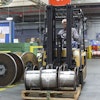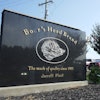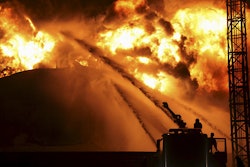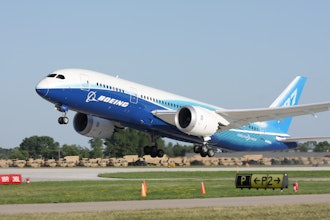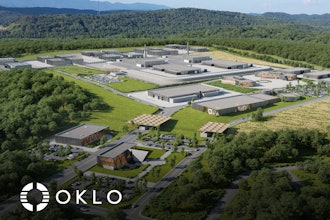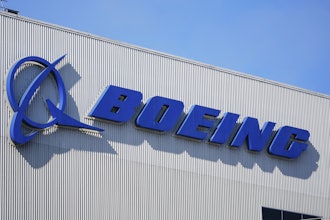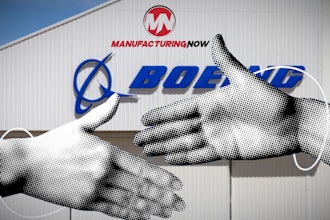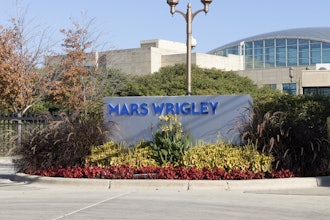How Automated Water Jetting
Improves Tube Bundle
Cleaning Efficiency
“The Leader in Water Jet Productivity”
29830 Beck Road
Wixom, MI 48393-2824
Phone: (248) 624-5555
Fax: (248) 624-0908
e-mail: [email protected]
www.nlbcorp.com
Introduction
To keep today’s ultra-efficient heat exchanger
systems operating at peak efficiency,
petrochemical and refining facilities must clean
their tubes thoroughly and regularly to keep them
clear of process-related deposits. Such deposits
can drastically limit the system’s ability to transfer
heat, driving operating costs substantially higher.
Add indirect costs like downtime and compliance
with safety and environmental regulations, and the
pressure on tight operations budgets is intense.
To meet this challenge, more and more companies
today are cleaning tubes with high-pressure water
jetting (20,000 to 40,000 psi, or 1,400 to 2,800 bar).
Water jetting has been widely used for product
removal and industrial cleaning for some 40 years.
It removes even hardened deposits thoroughly
and cost-effectively, often saving thousands of
dollars while significantly improving productivity.
Semi-automated systems, for example, can clean
100 tubes 75% faster than manual methods,
depending on the size of the tube bundle and the
material being cleaned out. Fully-automated
systems can clean them 90% faster than manual
methods.
A high-pressure water jet tube cleaning system
typically involves a small nozzle placed on the end
of either a rigid tube (for straight line cleaning) or a small flexible hose (for tubes with bends).
High-pressure water from a pump unit is fed through the tube or hose and exits the nozzle at a
speed and pressure that removes even the hardest residues, rust and scale. Then the waste
material is flushed out of the tubes and rinsed away.
Traditional Manual Methods
One of the most common and most economical methods
for cleaning tubes is manual water blasting. There are a
number of variations on this, but all generally require an
operator to manually feed the nozzle into each tube that
needs to be cleaned. Once the nozzle is positioned in the
tube, the operator starts the flow of high-pressure water
by depressing a foot pedal. This process, while effective,
has drawbacks. First, it can be time-consuming. Second,
holding on to a hose as high-pressure water rushes
through can lead to operator fatigue over time. Third,
the operator may not always feed the nozzle into the tube
at the same speed, which can result in uneven cleaning.
Water jetting is widely used for shellside cleaning as
well as tube lancing.
Manual water jet tube lancing
Automated Systems
Automated systems clean several tubes at once while
the operator stands clear.
Automated systems are a superior method for
removing product build-up from heat transfer
tubes. Not only do they save many hours
compared to manual methods (see Table 1,
page 4), but more importantly they eliminate the
variables an operator brings to the process while
removing him or her from the immediate vicinity
of the high-pressure water.
Automated systems for cleaning tubes typically
have multiple lances or hoses, a means of moving
them across the face of the tube bundle, and a
system for feeding them in and out of the tubes
without manual labor. The operator typically
controls the actions of the system from a remote
position nearby. Hoses and lances are usually
provided in different sizes to suit a variety of tube
diameters; changeover should be simple to minimize downtime.
Types of Automated Systems
There are two basic types of automated tube lancing systems: those that use flexible hoses and
those that use rigid tubing. Each has advantages and disadvantages, and choosing the right
system can go a long way to assuring a user of the most efficient, productive tube cleaning
possible.
Flexible Lance Systems
Dual flex lance system with manual feed
Automated systems with flexible hoses have two
major advantages: the flexible lances can go
around bends in the tubes and offer more
positioning flexibility during the cleaning process.
The larger of these types of systems will often
have an X-Y positioning device that lets the
operator put the hoses into position for the
cleaning cycle. These systems often feed as
many as three individual hoses into the tubes at
the same time. Smaller flexible hose systems
typically have only one or two hoses, with a
hand-held device so the operator can manually
move them from tube to tube.
When flexible hoses are used, hose management
must be considered. Older systems generally
used a hose reel to roll up the hoses and move them forward or backward as the lances were fed
in and out of the tubes. While this kept the hoses under control, the material being cleaned out of
the tubes often found its way back into the reel, ultimately causing the system to bind up. This
made the reel one of the most problematic portions of the system.
Triple flex lance system with mechanical feed
The newest generation of automated flexible
tube cleaning systems has solved this problem
with a track drive system that captures each
hose and drives the back-and-forth motion
required for cleaning. The hoses are allowed to
feed out behind the device and simply lie on the
floor. The elimination of hose reels greatly
reduces the amount of space required for a
flexible lance system, especially compared to a
rigid lance system.
Rigid Lance Systems
Quintuple rigid lance system with climate-controlled
operator station
Rigid lance systems are not as flexible as
automated systems, but make up for it in sheer
performance. These systems have small-diameter
pipes with high-pressure nozzles on the ends to
clean tubes. Since the piping is rigid, the system
can literally force the nozzles through the
obstructed tubes, adding mechanical force to the
cleaning action of the water jets. However, the
piping tends to be quite long (30 feet is not
uncommon), so a rigid lance system can require
up to 6 times more operating space than a flexible
lance system.
Fully automated systems can clean more tubes at
a time, providing the highest level of productivity.
They also provide the most protection and
comfort for the operator. The system shown here
has an operator station above the tube bundle
with full controls. It gives the operator a full view
of the cleaning process, a comfortable seat and a
climate-controlled environment.
From here he can control the in-and-out
movement of the lances and the up/down
movement of the levelers. If the system has a
bundle roller option, he can also rotate the tube
bundle as needed.
Productivity
As the examples in Table 1 demonstrate, semi-automated and fully automated water jetting
systems require about half as much time per pass as manual water jetting, and this advantage
increases as lances are added. A fully-automated 5-lance system can clean 100 tubes in a little
over an hour, compared to 16 hours with labor-intensive manual cleaning. Actual cleaning times
can vary greatly, depending on the length of the tubes and the type of material being removed.
Table 1
Tube Cleaning Method Number of Lances
Number of
Tubes to Clean
Time per
Cleaning Pass
Total Cleaning
Time Time Saved
Manual Water Blasting 1 100 10 Min 16 Hours NA
Semi-Automated Dual Flex
Lance System
2 100 5 Min* 4 Hours 12 Hours
Semi-Automated Triple Flex
Lance System
3 100 5 Min* 2.75 Hours 13.25 Hours
Automated Quintuple Rigid
Lance System
5 100 4 Min* 1.3 Hours 14.7 Hours
* Automated systems allow the operator to clean on both the in and out stroke of the cleaning lance.
In addition to increasing productivity, automated water jet systems can improve the quality and
consistency of the cleaning process. The systems discussed in this white paper allow tubes to be
cleaned both on the inward and outward passes, so more material is removed in less time. They
also allow the operator to set the feed rate so that each tube will be cleaned in an even,
repeatable manner.
Safety and Ergonomics
Automated tube cleaning systems have benefits
for operating personnel as well. Manual hose or
lance feeding can be tiring over time (as
previously noted) and can expose operators to
backsplash and debris. With a semi-automated
system, the operator has complete control
without coming near the waterblasting, using a
remote (even wireless) control.
“The Leader in Water Jet Productivity”
Conclusion
Tube bundle cleaning plays a key role in maintaining heat exchanger efficiency, which is a critical
factor in petrochemical quality and productivity. High-pressure water jetting is a proven method
for keeping tubes clear of deposits, and today’s automated systems are more effective — and
more operator-friendly — than ever before. They can reduce cleaning time by 75% to 90% vs.
manual water jetting, and processors can choose from different levels of automation to suit their
specific needs.
How Automated Water Jetting Improves Tube Bundle Cleaning Efficiency
Regular tank and reactor cleaning is essential to assure product quality, and the choice of cleaning methods can have a big impact on productivity, employee safety, and profitability.
Latest in Home
Regional Manufacturing: The Future of a Resilient Industry
September 16, 2025
NHTSA Investigating Tesla Door Handles That Could Trap Passengers
September 16, 2025
Ford to Cut Up to 1,000 Jobs at German Plant as EV Demand Lags
September 16, 2025
